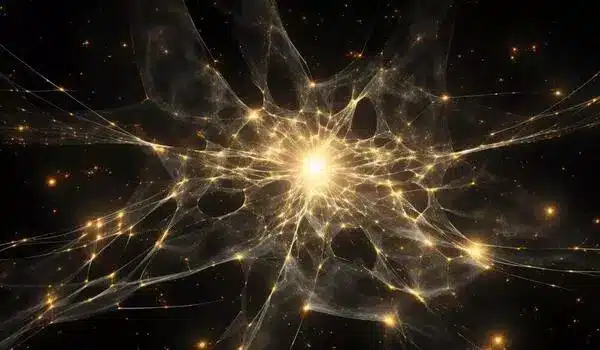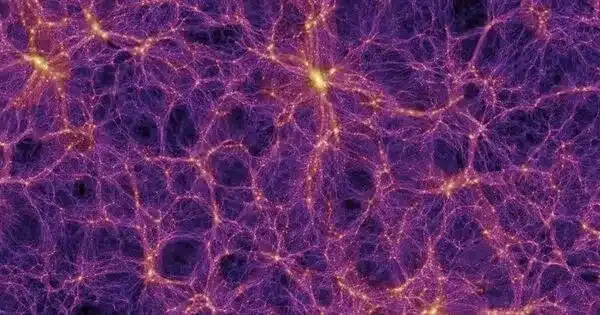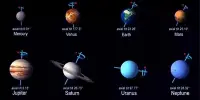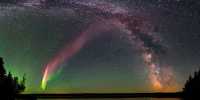The cosmic web is a large-scale structure of the universe that is made up of massive filaments of galaxies and clusters separated by immense spaces. It is the universe’s largest and most visible structure, and its origin is inextricably linked to the evolution of the universe. Understanding its earliest strands necessitates going back to the beginnings of the cosmos and its genesis.
Galaxies are not randomly distributed throughout the universe. They form not simply clusters, but massive interwoven filamentary formations with enormous barren spaces in between. This “cosmic web” began as a hazy thread and grew stronger over time as gravity brought stuff together.
Astronomers using NASA’s James Webb Space Telescope identified a thread-like pattern of ten galaxies 830 million years after the big bang. A brilliant quasar — a galaxy with an active, supermassive black hole at its heart — anchors the 3 million light-year-long structure. The researchers anticipate the filament will eventually form a large cluster of galaxies, similar to the well-known Coma Cluster in the nearby universe.
“I was surprised by how long and narrow this filament is,” said University of Arizona in Tucson team member Xiaohui Fan. “I expected to find something, but I didn’t anticipate such a long, distinctly thin structure.”
The last two decades of cosmology research have given us a robust understanding of how the cosmic web forms and evolves. ASPIRE aims to understand how to incorporate the emergence of the earliest massive black holes into our current story of the formation of cosmic structure.
Joseph Hennawi
“This is one of the earliest filamentary structures that people have ever found associated with a distant quasar,” said Feige Wang, the program’s chief investigator at the University of Arizona in Tucson.
The ASPIRE project (A SPectroscopic survey of biased halos in the Reionization Era) made this discovery, which aims to explore the cosmic settings of the first black holes. The program will look at 25 quasars that existed in the first billion years following the big bang, a period known as the Epoch of Reionization.
“The last two decades of cosmology research have given us a robust understanding of how the cosmic web forms and evolves. ASPIRE aims to understand how to incorporate the emergence of the earliest massive black holes into our current story of the formation of cosmic structure,” explained team member Joseph Hennawi of the University of California, Santa Barbara.

Growing Monsters
Another section of the research looks into the properties of eight quasars in the early universe. The researchers confirmed that their center black holes, which originated less than a billion years after the big bang, have masses ranging from 600 million to 2 billion times that of our Sun. Astronomers are still looking for data to explain how these black holes might grow so enormous so quickly.
“To form these supermassive black holes in such a short time, two criteria must be satisfied. First, you need to start growing from a massive ‘seed’ black hole. Second, even if this seed starts with a mass equivalent to a thousand Suns, it still needs to accrete a million times more matter at the maximum possible rate for its entire lifetime,” explained Wang.
“These unprecedented observations provide crucial information about how black holes form.” “We’ve discovered that these black holes are located in massive young galaxies, which serve as a reservoir of fuel for their growth,” said Jinyi Yang of the University of Arizona, who is leading the ASPIRE research of black holes.
Webb also gave the greatest evidence yet for how early supermassive black holes may influence star formation in their galaxies. While supermassive black holes accrete matter, they can also power huge outflows of matter. On a galactic scale, these winds can spread far beyond the black hole itself and have a profound impact on star formation.















